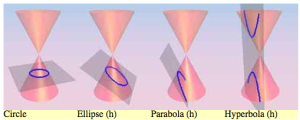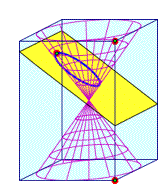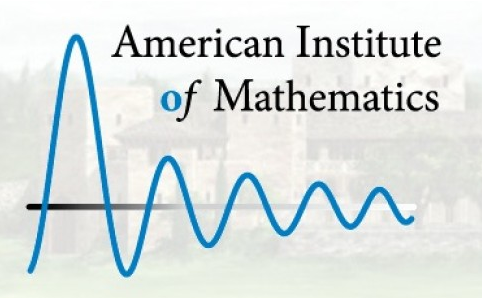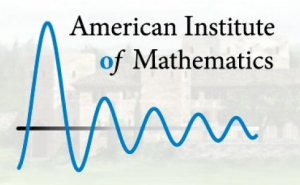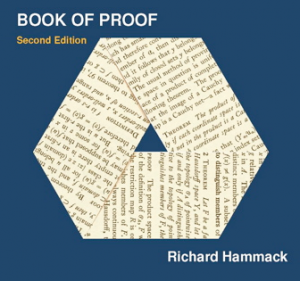https://www.tiger-algebra.com/drill/3x2_11x_4=0/
3x2+11x+4=0
Two solutions were found :
- x =(-11-√73)/6=-3.257
- x =(-11+√73)/6=-0.409
Reformatting the input :
Changes made to your input should not affect the solution:
(1): "x2" was replaced by "x^2".
Step by step solution :
Step 1 :
Equation at the end of step 1 :
(3x2 + 11x) + 4 = 0
Step 2 :
Trying to factor by splitting the middle term
The first term is, 3x2 its coefficient is 3 .
The middle term is, +11x its coefficient is 11 .
The last term, "the constant", is +4
Step-1 : Multiply the coefficient of the first term by the constant 3 • 4 = 12
Step-2 : Find two factors of 12 whose sum equals the coefficient of the middle term, which is 11 .
| -12 | + | -1 | = | -13 | ||
| -6 | + | -2 | = | -8 | ||
| -4 | + | -3 | = | -7 | ||
| -3 | + | -4 | = | -7 | ||
| -2 | + | -6 | = | -8 | ||
| -1 | + | -12 | = | -13 | ||
| 1 | + | 12 | = | 13 | ||
| 2 | + | 6 | = | 8 | ||
| 3 | + | 4 | = | 7 | ||
| 4 | + | 3 | = | 7 | ||
| 6 | + | 2 | = | 8 | ||
| 12 | + | 1 | = | 13 |
Observation : No two such factors can be found !!
Conclusion : Trinomial can not be factored
Equation at the end of step 2 :
3x2 + 11x + 4 = 0
Step 3 :
Parabola, Finding the Vertex :
3.1 Find the Vertex of y = 3x2+11x+4
Parabolas have a highest or a lowest point called the Vertex . Our parabola opens up and accordingly has a lowest point (AKA absolute minimum) . We know this even before plotting "y" because the coefficient of the first term, 3 , is positive (greater than zero).
Each parabola has a vertical line of symmetry that passes through its vertex. Because of this symmetry, the line of symmetry would, for example, pass through the midpoint of the two x -intercepts (roots or solutions) of the parabola. That is, if the parabola has indeed two real solutions.
Parabolas can model many real life situations, such as the height above ground, of an object thrown upward, after some period of time. The vertex of the parabola can provide us with information, such as the maximum height that object, thrown upwards, can reach. For this reason we want to be able to find the coordinates of the vertex.
For any parabola,Ax2+Bx+C,the x -coordinate of the vertex is given by -B/(2A) . In our case the x coordinate is -1.8333
Plugging into the parabola formula -1.8333 for x we can calculate the y -coordinate :
y = 3.0 * -1.83 * -1.83 + 11.0 * -1.83 + 4.0
or y = -6.083
Parabola, Graphing Vertex and X-Intercepts :
Root plot for : y = 3x2+11x+4
Axis of Symmetry (dashed) {x}={-1.83}
Vertex at {x,y} = {-1.83,-6.08}
x -Intercepts (Roots) :
Root 1 at {x,y} = {-3.26, 0.00}
Root 2 at {x,y} = {-0.41, 0.00} Solve Quadratic Equation by Completing The Square
3.2 Solving 3x2+11x+4 = 0 by Completing The Square .
Divide both sides of the equation by 3 to have 1 as the coefficient of the first term :
x2+(11/3)x+(4/3) = 0
Subtract 4/3 from both side of the equation :
x2+(11/3)x = -4/3
Now the clever bit: Take the coefficient of x , which is 11/3 , divide by two, giving 11/6 , and finally square it giving 121/36
Add 121/36 to both sides of the equation :
On the right hand side we have :
-4/3 + 121/36 The common denominator of the two fractions is 36 Adding (-48/36)+(121/36) gives 73/36
So adding to both sides we finally get :
x2+(11/3)x+(121/36) = 73/36
Adding 121/36 has completed the left hand side into a perfect square :
x2+(11/3)x+(121/36) =
(x+(11/6)) • (x+(11/6)) =
(x+(11/6))2
Things which are equal to the same thing are also equal to one another. Since
x2+(11/3)x+(121/36) = 73/36 and
x2+(11/3)x+(121/36) = (x+(11/6))2
then, according to the law of transitivity,
(x+(11/6))2 = 73/36
We'll refer to this Equation as Eq. #3.2.1
The Square Root Principle says that When two things are equal, their square roots are equal.
Note that the square root of
(x+(11/6))2 is
(x+(11/6))2/2 =
(x+(11/6))1 =
x+(11/6)
Now, applying the Square Root Principle to Eq. #3.2.1 we get:
x+(11/6) = √ 73/36
Subtract 11/6 from both sides to obtain:
x = -11/6 + √ 73/36
Since a square root has two values, one positive and the other negative
x2 + (11/3)x + (4/3) = 0
has two solutions:
x = -11/6 + √ 73/36
or
x = -11/6 - √ 73/36
Note that √ 73/36 can be written as
√ 73 / √ 36 which is √ 73 / 6
Solve Quadratic Equation using the Quadratic Formula
3.3 Solving 3x2+11x+4 = 0 by the Quadratic Formula .
According to the Quadratic Formula, x , the solution for Ax2+Bx+C = 0 , where A, B and C are numbers, often called coefficients, is given by :
- B ± √ B2-4AC
x = ————————
2A
In our case, A = 3
B = 11
C = 4
Accordingly, B2 - 4AC =
121 - 48 =
73
Applying the quadratic formula :
-11 ± √ 73
x = ——————
6
√ 73 , rounded to 4 decimal digits, is 8.5440
So now we are looking at:
x = ( -11 ± 8.544 ) / 6
Two real solutions:
x =(-11+√73)/6=-0.409
or:
x =(-11-√73)/6=-3.257
Two solutions were found :
- x =(-11-√73)/6=-3.257
- x =(-11+√73)/6=-0.409

